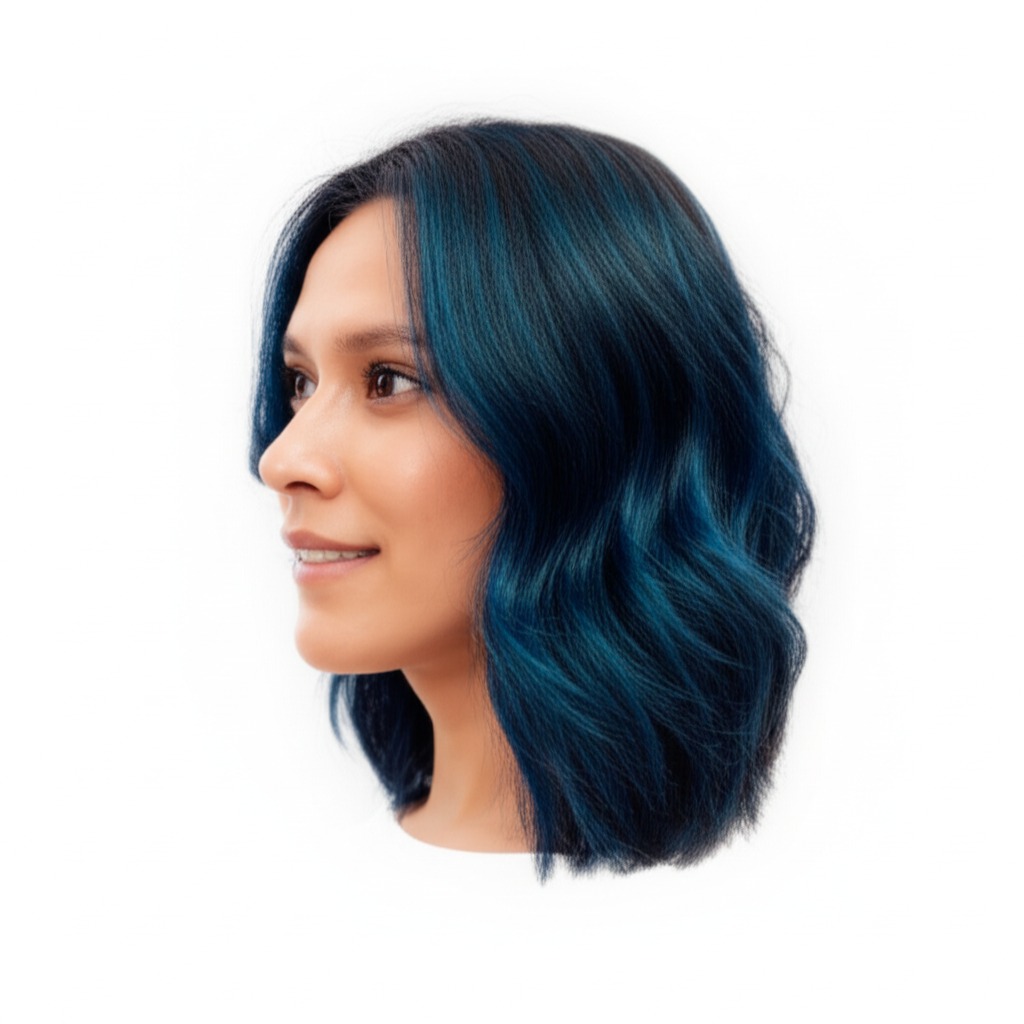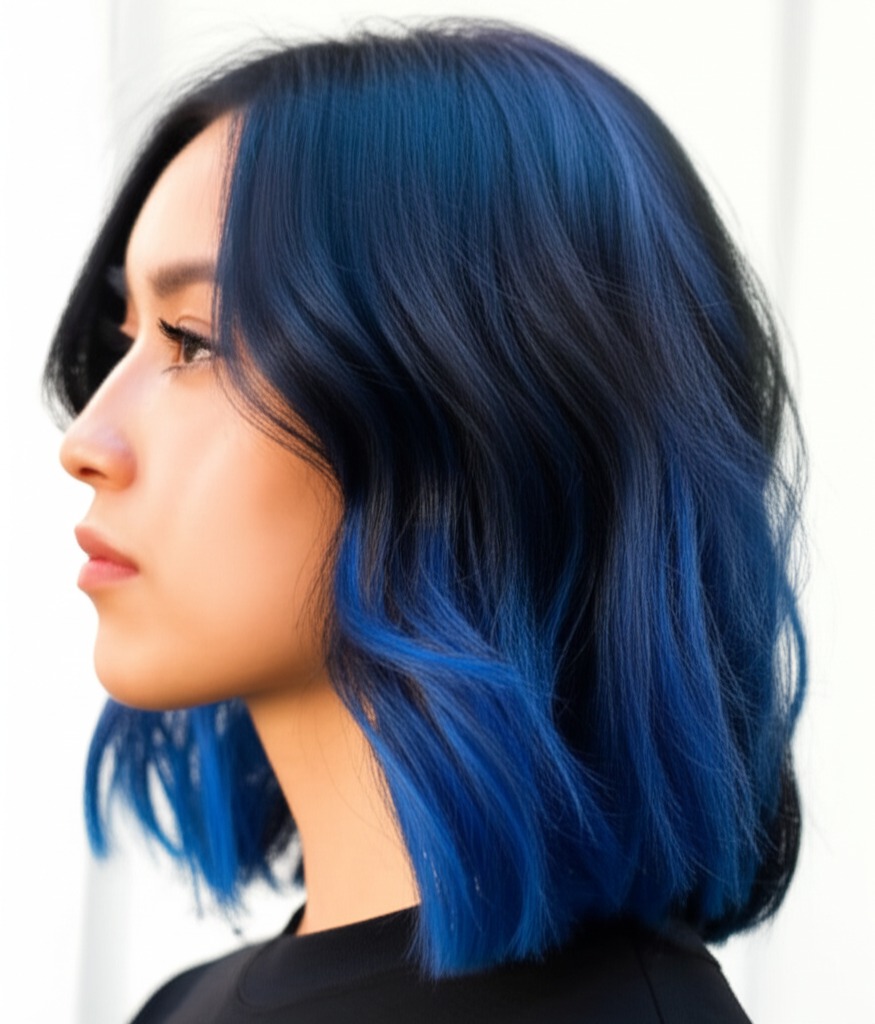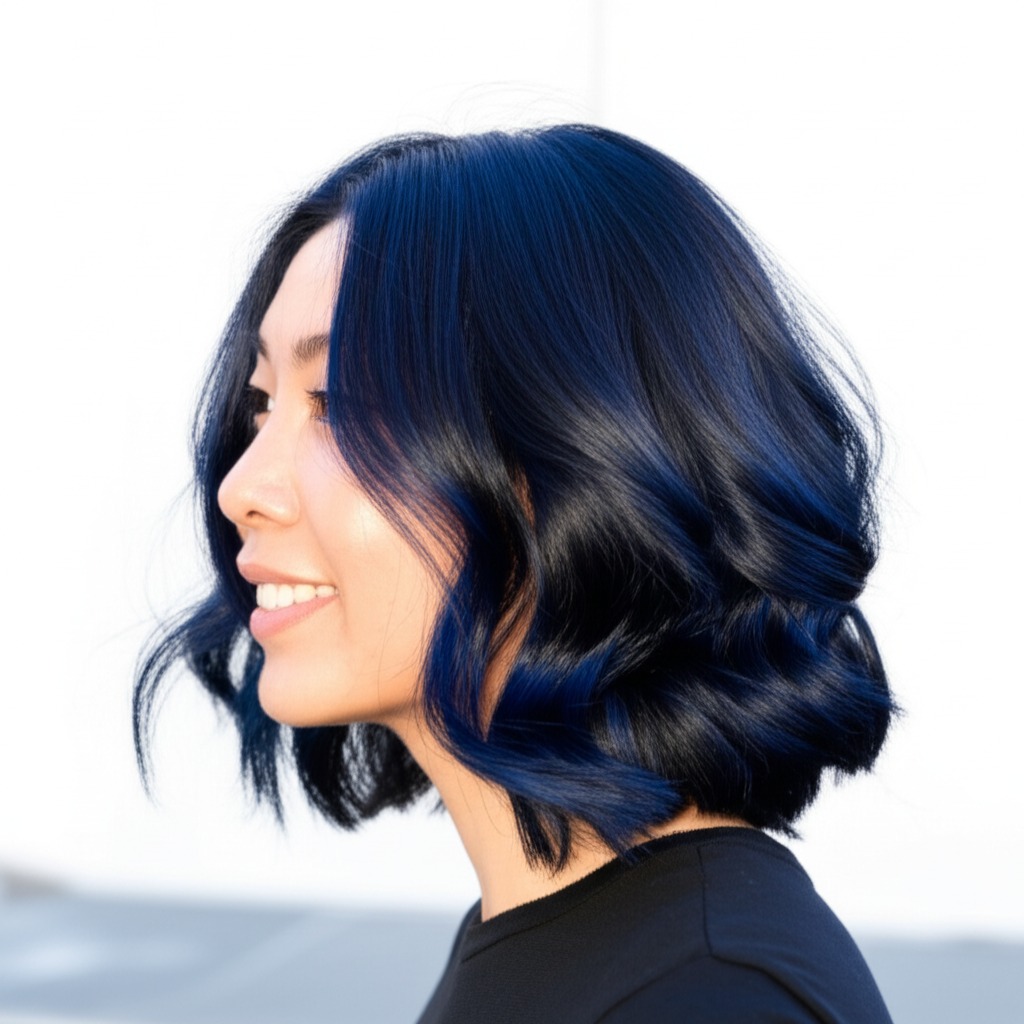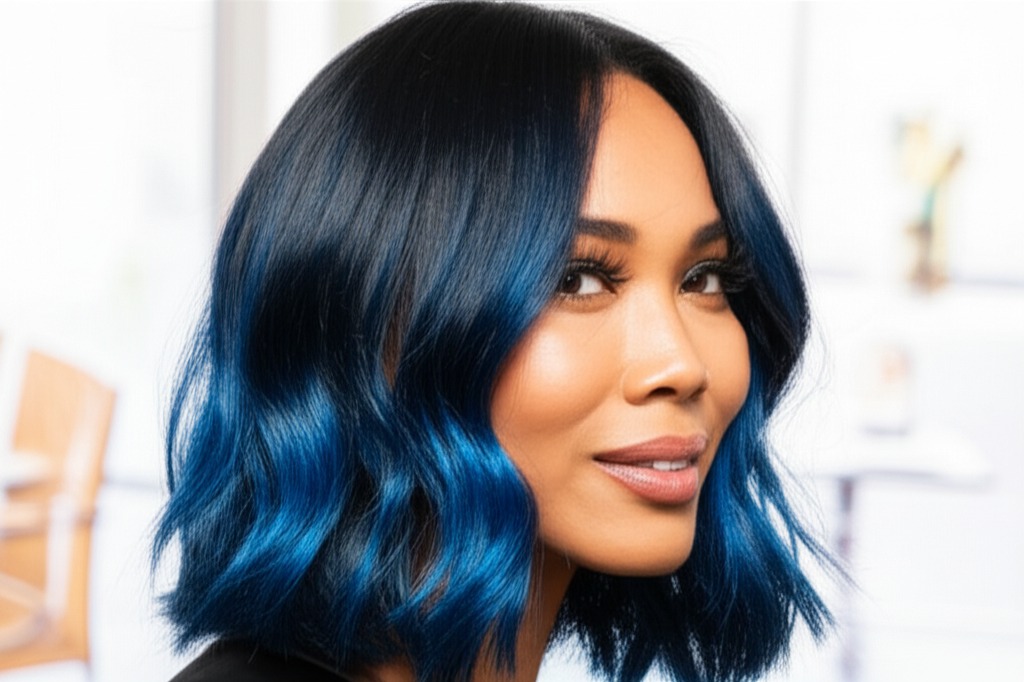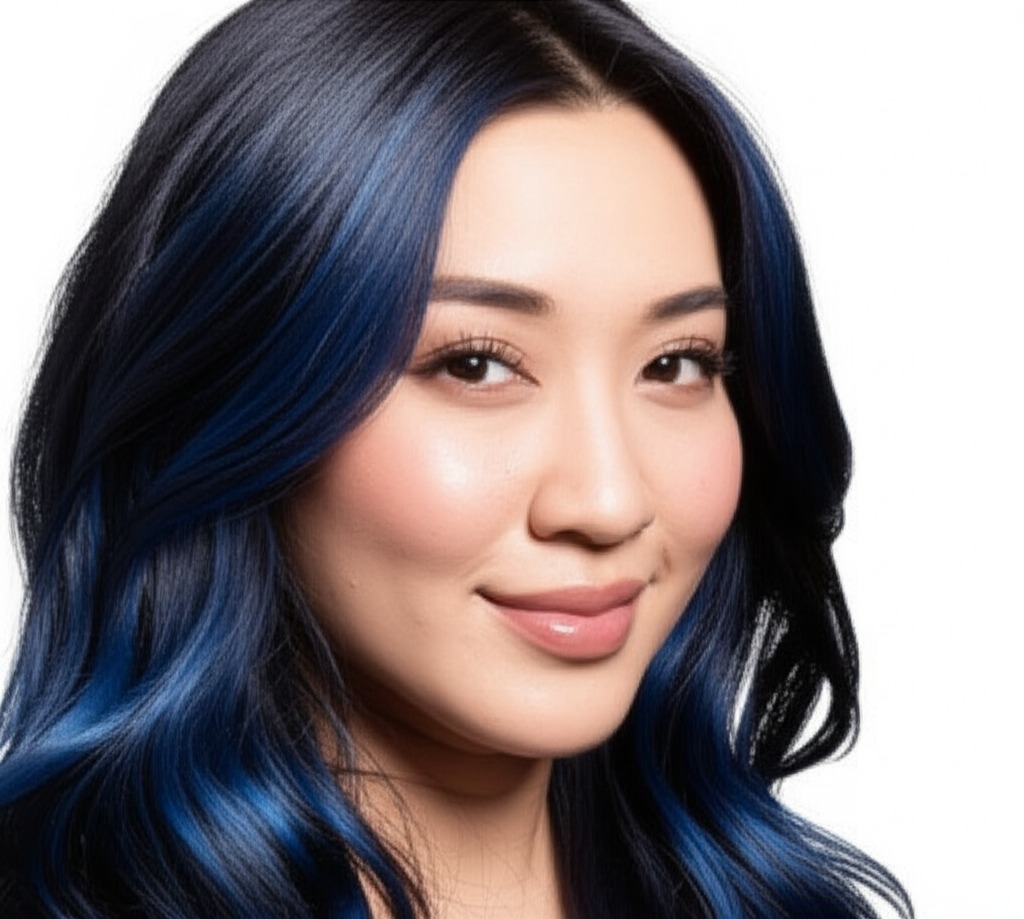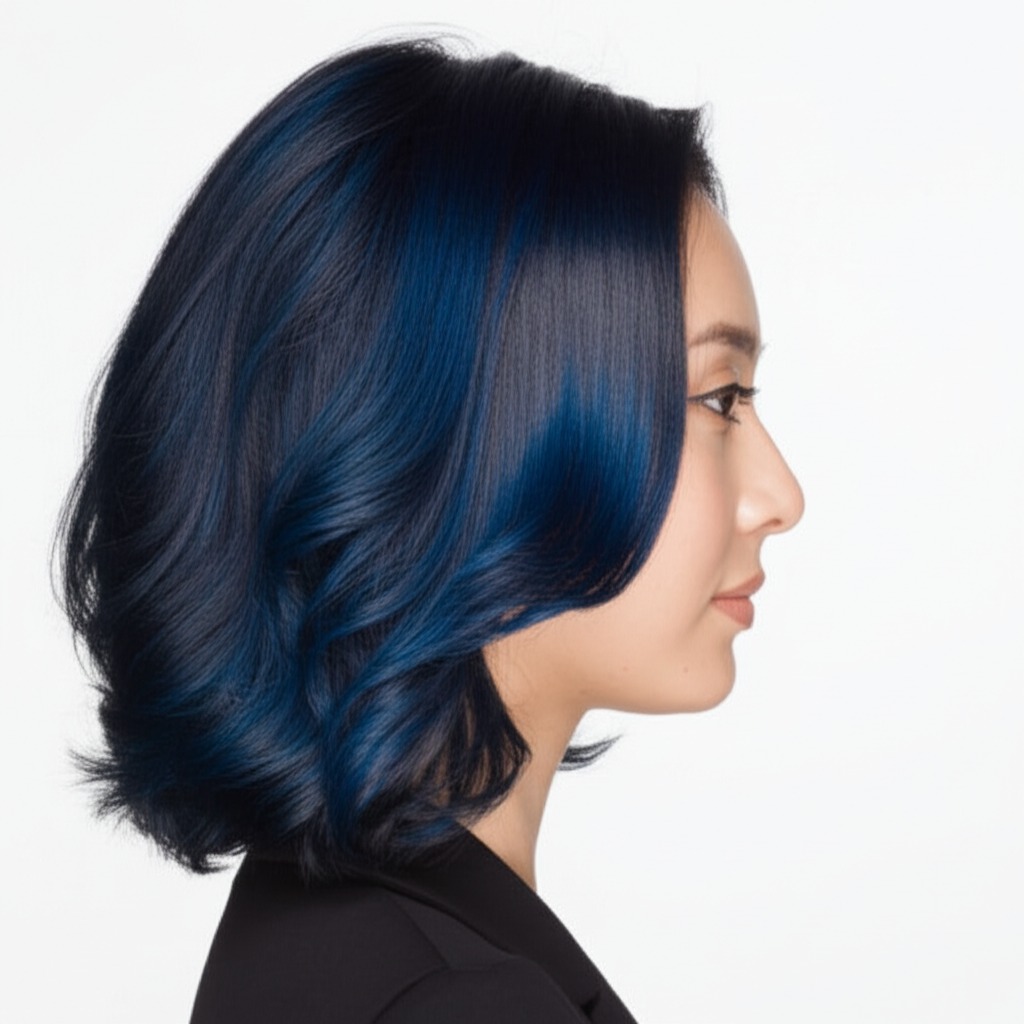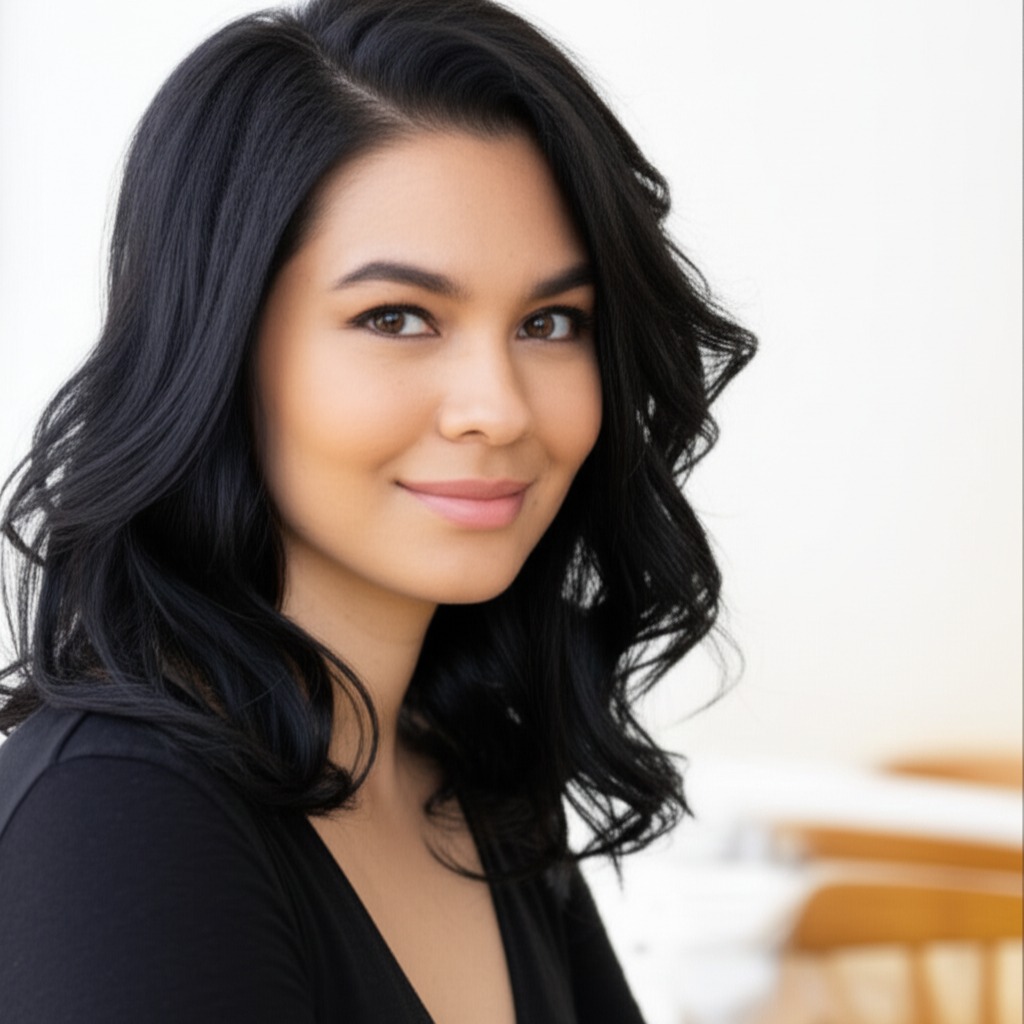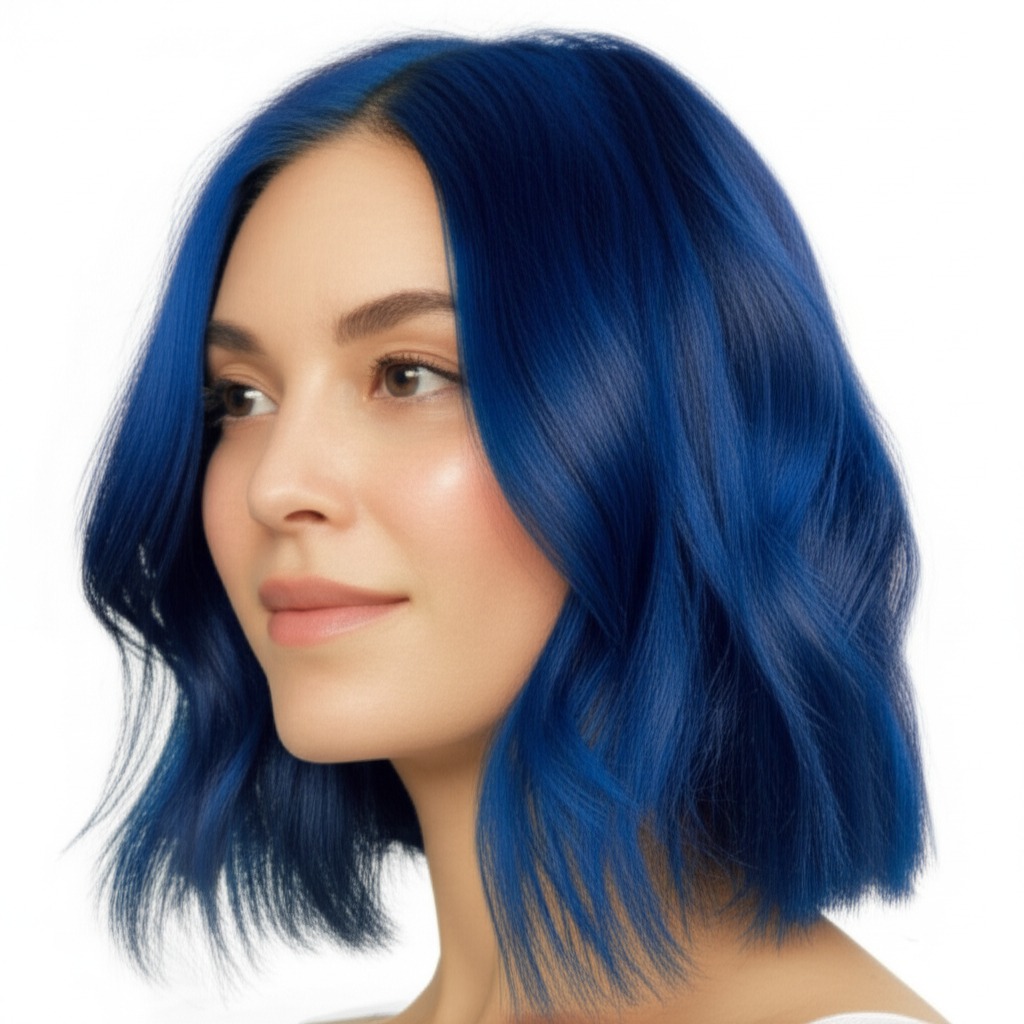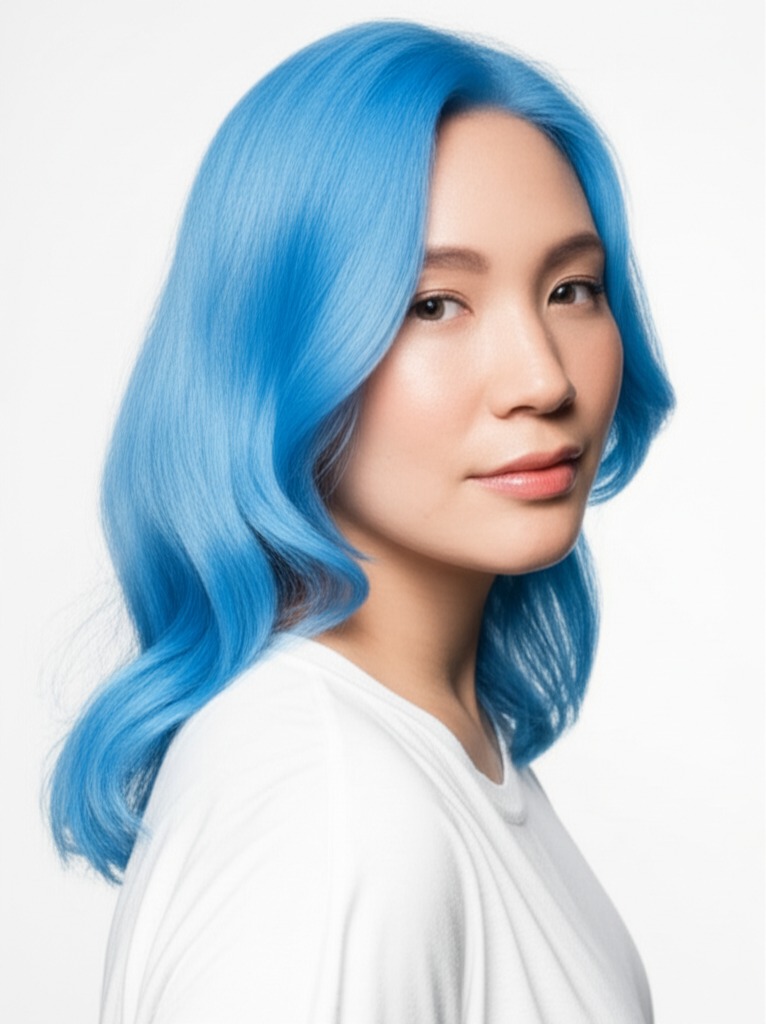#Dive into Deep Blue Black Hair Color
Blue black is a striking hair color that’s making waves! It's more than just plain black – it has a subtle coolness that adds depth and dimension. But getting it right requires understanding its nuances. This guide will walk you through everything you need to know about blue black, from finding the perfect shade to keeping it looking gorgeous.
#1. Understanding Blue Black: Shade Definition
Blue black isn’t a single color; it's a family of shades! The “blue” element is incredibly subtle – it doesn't create a vibrant turquoise effect. Instead, it adds richness and complexity that prevents the hair from looking flat or one-dimensional.
- Undertone: Blue black leans cool. This means it has blue or violet undertones. These cool tones are what give it its depth and prevent it from appearing muddy or brown.
- Depth (Levels): The level refers to how dark the color is on a scale of 1-10, with 1 being the lightest and 10 being the darkest. Blue black typically sits between levels 6 – 9. A level 6 will be noticeably softer than a level 9, which approaches true black. The darker you go (closer to level 10), the more intense the blue undertones become, but they remain subtle.
#2. Who Does Blue Black Flatter?
Choosing a hair color is personal, but understanding how it interacts with your features can help ensure you love the result!
- Skin Tone & Undertone: Blue black generally looks best on those with cool or neutral skin tones. Think fair porcelain skin with pink undertones, olive skin, or even medium-toned skin that leans cool. Warm skin tones (golden, peachy) can sometimes find blue black appears stark against their complexion. However, skilled stylists can often adjust the shade to work for warmer complexions by softening it slightly.
- Eye Colors: Blue black really makes eye colors pop! Blue, green, grey and hazel eyes are especially stunning with this color. Brown eyes also look beautiful, creating a dramatic contrast.
- Natural Level Starting Points: The darker your natural hair color, the easier (and less damaging) it will be to achieve blue black.
- Levels 1-4 (Very Light to Medium Brown): Significant lightening is required before applying blue black. This process takes time and increases potential damage. A consultation with a stylist is essential!
- Levels 5-7 (Medium Brown): You'll likely need some lifting, but the transition will be easier than starting from lighter shades.
- Levels 8-10 (Dark Brown to Black): This is ideal! Blue black can often be achieved with a single process application.
#3. Technique Options: Finding Your Perfect Application
How you apply blue black impacts the final look and maintenance.
- Single Process: This involves applying color evenly across all of your hair. It’s best for those who want a solid, uniform color and have darker natural hair levels (7-10).
- Highlights/Lowlights: Adding subtle highlights or lowlights can add dimension. Cooler tones like silver or smoky grey would complement blue black beautifully.
- Babylights: Very fine, delicate highlights that mimic the look of naturally sun-kissed hair. This softens the overall effect and adds lightness around the face.
- Gloss/Toner: A gloss or toner can be used after applying the base color to enhance the blue undertones and add shine. This is a great way to fine-tune the shade.
- Balayage-Effect vs Solid: Balayage, with its hand-painted application, creates a softer, more natural look than a solid block of color. This can be particularly flattering if you're hesitant about going all over dark.
#4. Maintenance & Longevity: Keeping Your Color Vibrant
Blue black isn’t “set it and forget it.” Here’s what to expect:
- Wash Frequency: Limit washes to 2-3 times a week to preserve color vibrancy.
- Toner Refresh: The blue undertones can fade over time, especially with washing or sun exposure. A toner refresh every 6-8 weeks will keep the shade looking rich and cool.
- Root Growth Pacing: As your natural hair grows in, you’ll see a contrast between your blue black color and your roots. This is less noticeable than with lighter colors but still needs addressing – either through touch-ups or embracing a slightly grown-out look.
- Budget/Time Planning: This color requires regular salon visits (every 6-8 weeks for toner, longer intervals if you’re lifting your hair). Budget accordingly! The initial application can take several hours depending on the technique and starting level.
#5. Seasonality & Pairing with Cuts: Style it Right
Blue black is surprisingly versatile across seasons and hairstyles.
- Cuts:
- Bob/Lob: A sleek bob or lob looks incredibly chic with blue black, emphasizing its boldness.
- Long Layers: Long layers soften the look while still showcasing the color’s depth.
- Pixie Cut: A pixie cut can be edgy and dramatic with blue black – perfect for a statement style!
- Seasonal Tweaks: In winter, embrace the deep richness of blue black. For summer, consider adding subtle babylights to lighten up the look slightly.
- Event/Occasion Picks:
- Work: A solid application or balayage-effect is generally suitable for professional settings.
- Daytime: Keep it simple and chic with minimal styling.
- Evening: Add texture and volume for a more dramatic look.
- Weddings: Blue black can be stunning for a wedding, especially if paired with elegant updos or flowing hairstyles.
#6. At-Home Care: Protecting Your Investment
Proper at-home care is crucial to keeping your blue black vibrant and healthy.
- Sulfate-Free Shampoo & Conditioner: Sulfates strip color! Opt for sulfate-free formulas specifically designed for colored hair.
- Clarifying Cadence: While sulfates are a no-no, buildup can still occur. Use a clarifying shampoo every 4-6 weeks to remove residue and refresh the color.
- Heat Protection: Always use heat protectant spray before using any styling tools (blow dryers, straighteners, curling irons).
- Color-Safe Styling Tips: Avoid products containing harsh chemicals or alcohol. Rinse hair with cool water – hot water opens the cuticle and allows color to escape.
- Product Checklist:
- Sulfate-free shampoo & conditioner
- Heat protectant spray
- Deep conditioning mask (weekly)
- Color-safe styling products
#7. Common Pitfalls: Avoiding Color Mishaps
Let’s address potential issues and how to prevent them.
- Brassiness: While less common with blue black than other colors, brassy tones can still appear if the underlying pigments aren't properly neutralized during application or are exposed to hard water. Regular toning helps!
- Banding: This happens when color doesn’t apply evenly, creating noticeable lines. Proper sectioning and even product distribution by a skilled stylist is key.
- Patchiness: Uneven lightening (if required) can lead to patchiness. A strand test always recommended before committing to the full application!
#8. Pros & Cons: Weighing Your Options
Let's be realistic about what blue black offers and its challenges.
Pros:
- Dramatic & Stylish: A truly head-turning color.
- Versatile: Works with various cuts and styles.
- Can Flatter Many Skin Tones (with the right shade): A good option for those seeking a bold, cool look.
Cons:
- High Maintenance: Requires regular salon visits for toning and root touch-ups.
- Fade Risk: The blue undertones can fade over time if not properly cared for.
- Commitment: It’s a significant color change that requires dedication to upkeep.
#9. Salon Consultation Script: Setting Expectations
Before you sit in the stylist's chair, be prepared! Here are some questions and points to discuss:
- "I'm interested in blue black hair color – can you assess my natural level and determine if it’s achievable without significant damage?"
- “Could we do a strand test to see how my hair reacts to the color?”
- “What toning schedule would you recommend for maintaining the cool undertones?”
- "Can you show me examples of blue black shades that would complement my skin tone?"
- "How long will the application process take, and what’s your pricing structure?"
#10. FAQs: Your Burning Questions Answered
- Is blue black damaging to my hair? Any color service involves some level of processing. The damage depends on your natural hair level and the techniques used. A skilled stylist will minimize potential damage with careful product selection and application methods.
- Can I achieve blue black at home? While possible, it’s risky! Achieving even color distribution and preventing unwanted tones requires professional expertise.
- How long does blue black last? The base color can last for several weeks (until your roots grow in), but the blue undertones will fade faster – typically requiring a toner refresh every 6-8 weeks.
- Will blue black make my hair look dull? Not if properly maintained! Regular toning and using color-safe products will keep it vibrant and shiny.
- Can I go lighter from blue black? Yes, but it's complex and requires multiple sessions to remove the underlying pigment. Be prepared for potential damage.
- What’s the difference between “blue black” and "midnight blue"? Midnight Blue tends to have a more pronounced blue hue than true blue black, which is much deeper and darker with subtle cool undertones.
With careful planning, expert application, and diligent at-home care, you can rock this stunning shade!

